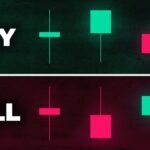Candlestick patterns are one of the most powerful tools in a day trader’s arsenal. These patterns can provide valuable insight into the market’s sentiment, helping traders make more informed decisions and increase their chances of success. By learning how to analyze candlestick patterns, day traders can better navigate the market and capitalize on potential opportunities.
One of the most basic concepts in candlestick analysis is understanding the different types of candlestick patterns. The three main types of candlestick patterns are single, dual, and triple candlestick patterns. Single candlestick patterns, such as the doji or hammer, provide information about the market’s sentiment at a specific point in time. Dual and triple candlestick patterns, on the other hand, provide more comprehensive information by incorporating multiple candles and indicating potential reversal or continuation patterns.
When analyzing candlestick patterns, it’s important to consider the context in which they occur. For example, a bullish engulfing pattern in isolation may indicate a potential reversal, but its significance is heightened if it occurs at a key support level. By studying the interplay between candlestick patterns and other technical indicators, day traders can gain a more complete understanding of market dynamics and make more informed trading decisions.
In addition to understanding the different types of candlestick patterns, day traders should also be aware of common patterns that signal potential opportunities. Some of the most popular and reliable candlestick patterns include the hammer, engulfing, and morning star patterns. These patterns can signal potential reversal or continuation opportunities, providing traders with valuable insights into market dynamics.
It’s also important to note that candlestick patterns are not infallible and should be used in conjunction with other technical and fundamental analysis tools. Traders should also consider the timeframe in which they are trading, as certain patterns may be more relevant on shorter or longer timeframes.
In conclusion, analyzing candlestick patterns can be a valuable tool for day traders looking to navigate the market and increase their chances of success. By understanding the different types of patterns, considering the context in which they occur, and utilizing them in conjunction with other technical indicators, traders can gain a more comprehensive view of market dynamics and make more informed trading decisions.
Overall, mastering the art of candlestick analysis can help day traders navigate the market with confidence and precision, ultimately leading to more successful day trades.


